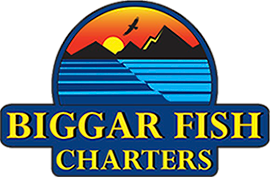What to expect on your charter fishing
A lot of people who decide to go on a fishing charter with me are new to the world of sport fishing for salmon and halibut and really don’t know what to expect on a fishing charter in Tofino.
Starting the day
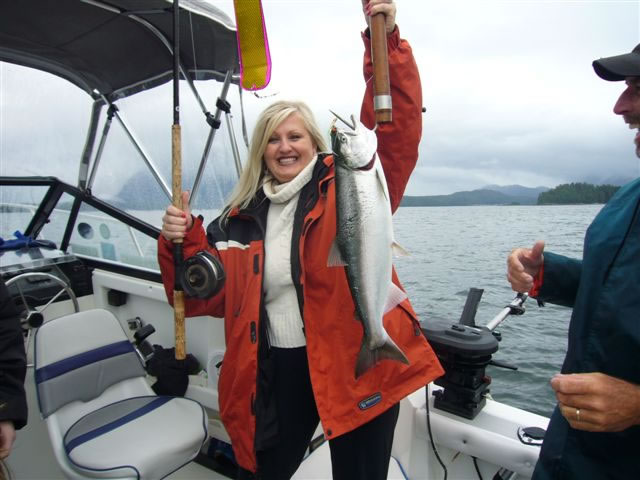
First of all you’re going to have to get up early. Yes, I know no sane person on holidays wants to get up before the crack of dawn, have a quick coffee, a hurried breakfast, drive down to the dock and jump on board a boat taking them out on the ocean to “God knows where”.
But… after doing this for 30 years and taking thousands of guests fishing, 99% wind up having a fabulous time and will have fond memories forevermore. So, in a nutshell, this is what happens.
Since we leave the dock at 6 a.m. plan on being ready to come aboard then. And…. no pictures of the boat before we leave the dock, as a mariner I’ve got my superstitions. Once we get back from the trip take all the pictures you want. Seriously.
Once you’re onboard
Once everyone’s aboard I’ll do a quick review of the safety procedures with everyone before casting off. After we untie if for some reason you forgot or haven’t bought your fishing license(s) yet, need another bathroom break or want to grab a coffee or some snacks, I can stop at the marine fuel dock on the way out of the harbor for a few minutes to grab what you need.
Once clear of the harbor I’ll throttle up and away we go. It’ll take about 6 minutes or so of flat calm water to reach Lennard Lighthouse and open ocean so this is the time to polish off your coffee. As a general rule the offshore swell will be between 1-2 meters, sort of a long lazy swell most days all summer. Depending on the tide it can seem a little “rough” for the first little bit past Lennard Light, but once we get about a mile offshore and into 100ft. of water, conditions tend to calm down.
The closest offshore fishing spot is 6 miles out from Lennard Light and takes about 20 minutes to reach. There are multiple fishing areas offshore to fish; some taking up to 40 minutes to reach and I won’t know where we’re going until the morning of our trip.
Getting down to the business of fishing
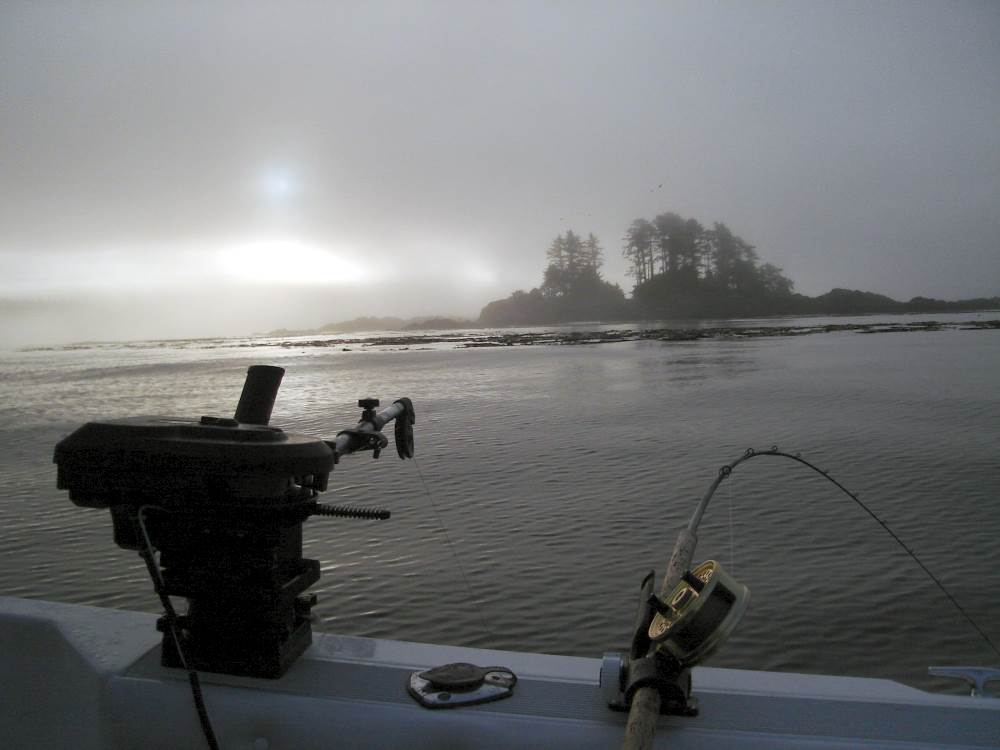
Depending on which fish you’d like to target first will determine where we stop first. If the “bites-on” for Chinook salmon that’s where we’re heading first and we’ll try for halibut later.
When we start trolling for salmon I’ll be using downriggers with a 15lb. lead ball to get the gear down to the depth the salmon and bait are at.
Rods and Reels
For the fishing rod and reel set-ups we’ll be using one on each side of the boat when we’re trolling. The rods are 10 ½’ long with “Islander” single action reels loaded with 40lb. test line.
Single action reels look just like fly fishing reels, real simple to operate and if you’ve never used one before I’ll teach you how to use them properly and what to expect from the time the fish bites to bringing it to the net. Every now and then we get a fish-on before the tutorial is finished which makes “learning on the fly” interesting and exciting.
When we’re halibut fishing we’ll be either at anchor or drifting. The rod/reel set-ups for this particular type of fishing are 6-7 ft., one-piece rods and level wind reels with 100 lb. test line.
If you’re new to fishing
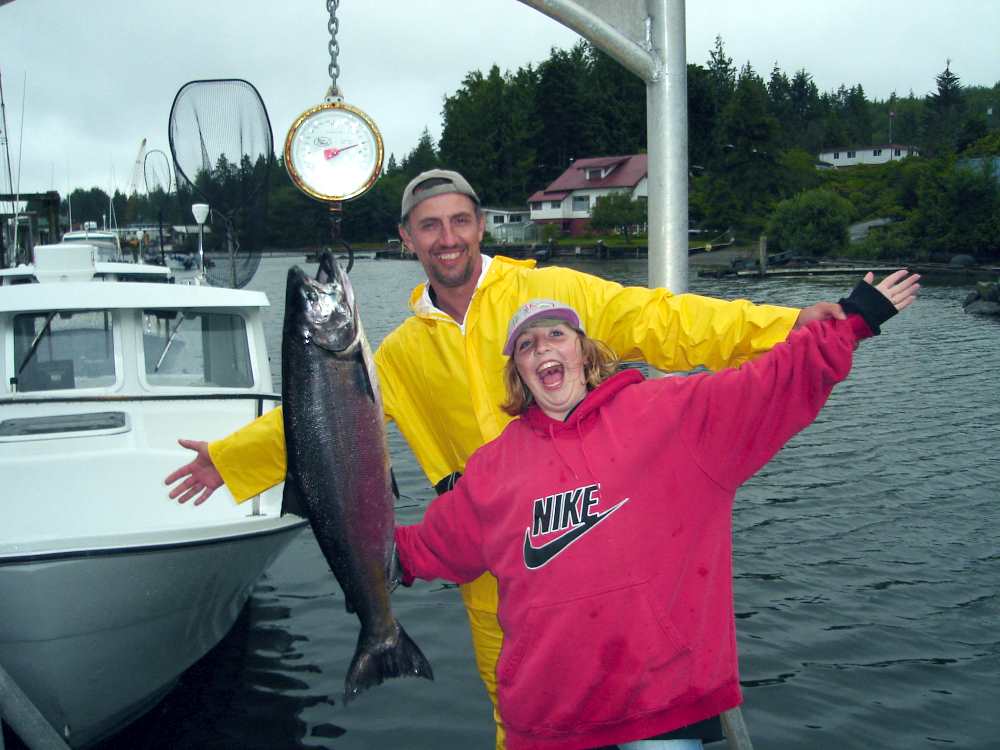
If you’re new to salmon fishing don’t worry I’ll be in the background gently coaching you through your battle with the fish.
Once the fish is aboard I’ll dispatch it (polite word for kill it), bleed it and get it into the fish locker so we can keep fishing or if you’d rather catch and release that’s fine too.
We usually fish between 2-4 spots during a 6-hour trip; it all depends on multiple factors.
Back on shore
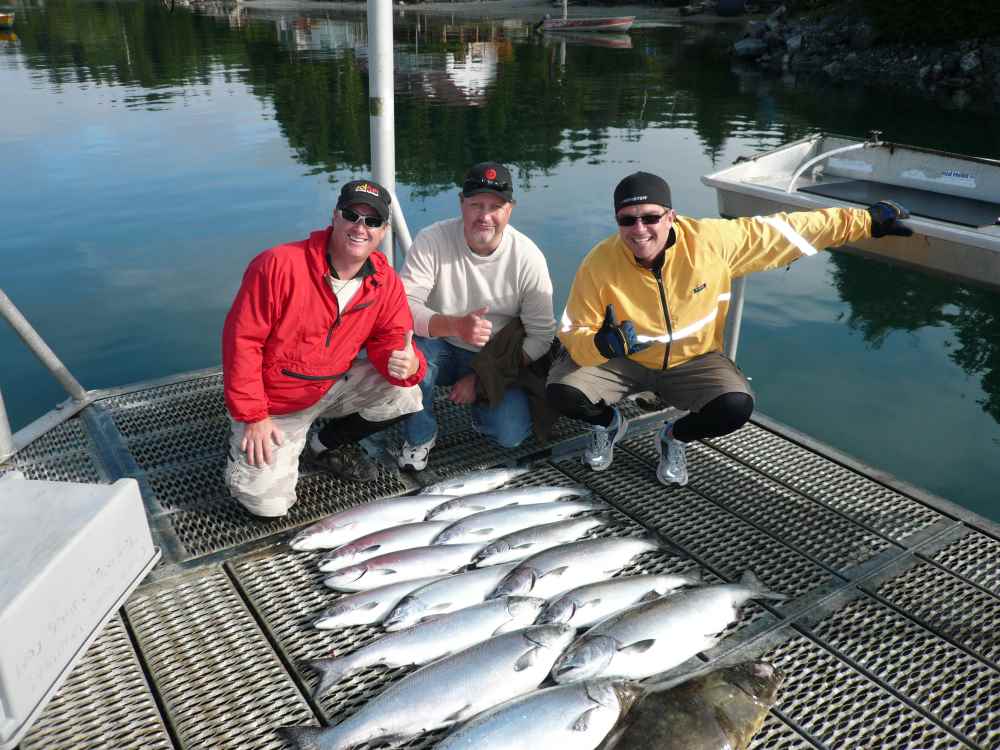
Once back at the dock, now is the time for taking pictures and cleaning the fish. 99.9% of my guests have their fish processed by one of two companies here in town. The fish is filleted and professionally vacuum packed and can be ready in as little as 1 hour if you need to leave immediately after our trip. In this case it won’t be frozen but by keeping it on ice will last for 24 hours until you get home or have access to a freezer. Otherwise the fish will be frozen and ready for pickup at your convenience, even as early as 6 a.m. on the day of your departure from town. If you don’t have a cooler they have various sizes of coolers to fit your fish, including the proper coolers for airline travel.
Shipping your fish is not recommended unless you have very, very deep pockets. 30lbs. of fish will cost upwards of $200 in North America and there’s no guarantee you’ll receive it or if it’ll still be frozen.
Clothing and food
Clothing is important and you should know what to bring. Wear clothing in layers, it’s better to bring a bit too much than not enough. I have raingear and the boat has a hardtop and cuddy cabin for protection. Don’t forget your sunglasses and if you forget the sunscreen I always have it aboard.
For food and drink, bring your own snacks, sandwiches, water, pop, etc. whatever your fancy.
Contact us
That’s about it. If you’ve got any questions whatsoever feel free to give me a call toll free at 1-800-307-0277 or send me an email.
